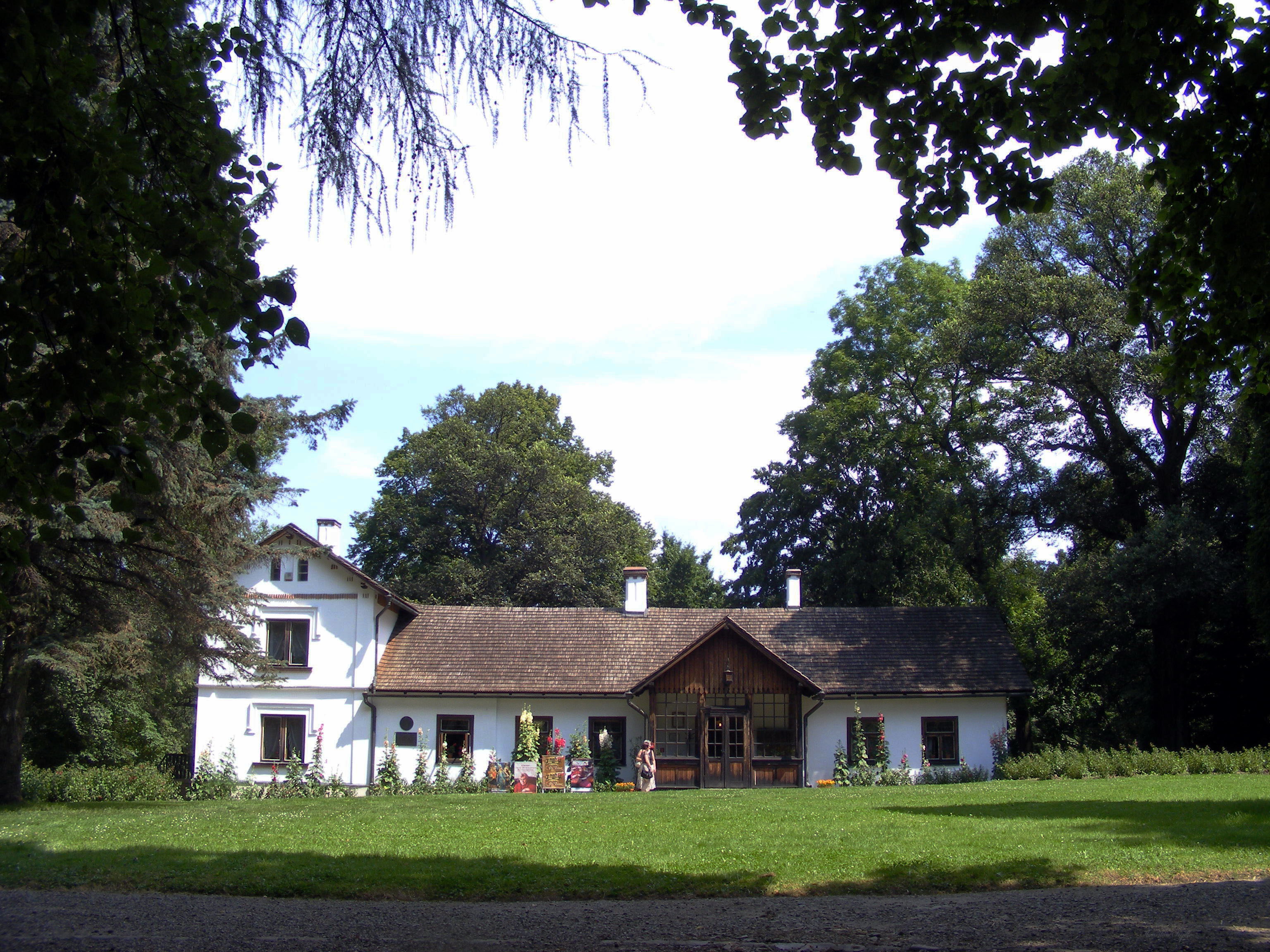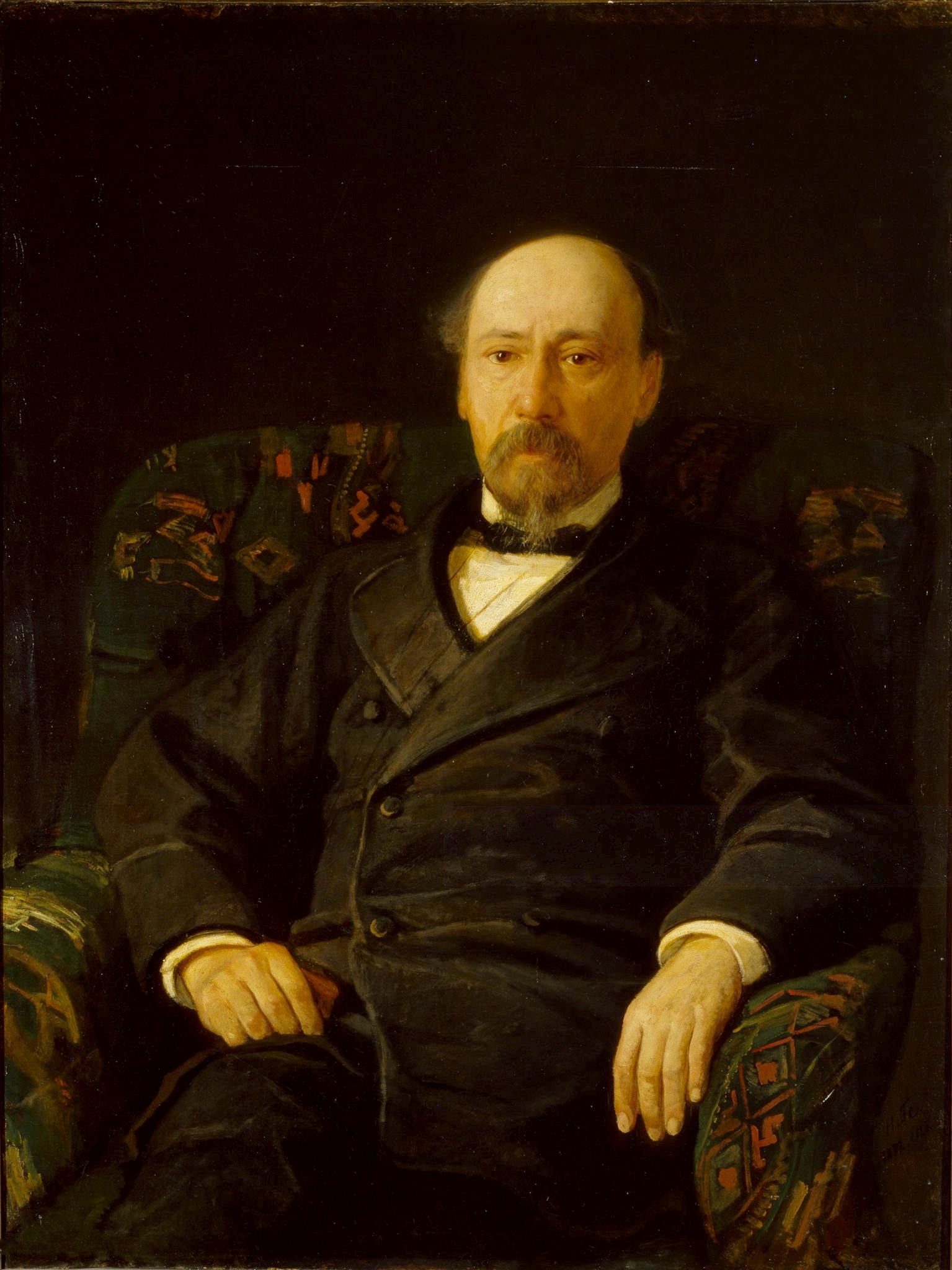|
Pranas Vaičaitis
Pranas Vaičaitis (10 February 1876 – 21 September 1901) was a Lithuanian poet. After graduation from the Marijampolė Gymnasium, he studied law at the Saint Petersburg University. Due to the violations of the Lithuanian press ban, he was imprisoned for a month in 1899 and could not find a jurist job. With the help of professor Eduards Volters, he obtained a job at the library of the Russian Academy of Sciences before progressing tuberculosis forced him to return home. He died at the age of 25 and left less than a hundred original poems. His first poems were published in 1896 in ''Varpas'' though the vast majority of them were published in ''Vienybė lietuvninkų'', a Lithuanian newspaper published in Plymouth, Pennsylvania. The first collection of his poems was published posthumously in 1903 in the United States. His poems are popular, particularly those about nature in Lithuania, and have been adopted to folk songs. His poetry is sensitive, intimate, without more complex met ... [...More Info...] [...Related Items...] OR: [Wikipedia] [Google] [Baidu] |
Sintautai
Sintautai is a small town in Marijampolƒó County, in southwestern Lithuania Lithuania, officially the Republic of Lithuania, is a country in the Baltic region of Europe. It is one of three Baltic states and lies on the eastern shore of the Baltic Sea, bordered by Latvia to the north, Belarus to the east and south, P .... According to the 2011 census, the town has a population of 520 people. References Towns in Lithuania Towns in Marijampolƒó County ≈Ýakiai District Municipality {{MarijampolƒóCounty-geo-stub ... [...More Info...] [...Related Items...] OR: [Wikipedia] [Google] [Baidu] |
Lithuanian Book Smugglers
Lithuanian book smugglers or Lithuanian book carriers (, singular: ) smuggled Lithuanian language books printed in the Latin alphabet into Lithuanian-speaking areas of the Russian Empire, defying a ban on such materials in force from 1864 to 1904. In Lithuanian, ''knygnešys'' literally means "the one who carries books". Opposing imperial Russian authorities' efforts to replace the traditional Latin orthography with Cyrillic, and transporting printed matter from as far away as the United States to do so, the book smugglers became a symbol of Lithuanians' resistance to Russification. History After the Polish-Lithuanian insurrection of 1863, the Russian Imperial government intensified its efforts to Russify the Lithuanian population and alienate it from its historic roots, including the Roman Catholic faith, which had become widespread during the years of the Polish–Lithuanian Commonwealth. During the summer of 1863, Tsar Alexander II issued Temporary Rules for State Jun ... [...More Info...] [...Related Items...] OR: [Wikipedia] [Google] [Baidu] |
Martynas Jankus
Martynas Jankus or Martin Jankus (7 August 1858 in Bittehnen (Lit.: Bitėnai), near Ragnit – 23 May 1946 in Flensburg, Germany, reburied in Bitėnai cemetery on 30 May 1993) was a Prussian-Lithuanian printer, social activist and publisher in East Prussia, called the Patriarch of Lithuania Minor. He was one of the publishers of '' Aušra'', the first Lithuanian-language newspaper for both Lithuania Minor and Lithuania Major. Jankus used various pen names, including V. Giedris, Martyneitis, Bitėnų Merčius, and Gyvoleitis. Biography After graduating from a primary school in Bitėnai, Jankus continued self-education. From the last decade of the 19th century he was an important figure in the pro-Lithuanian movement, and was close to the Lithuanian National Revival movement in Lithuania. He was one of the founders of several cultural organizations, including the Birutė Society, founded in 1885 in Tilsit. From 1889 to 1892 Jankus was its chairman. In 1890, together with Dov ... [...More Info...] [...Related Items...] OR: [Wikipedia] [Google] [Baidu] |
Quatrain
A quatrain is a type of stanza, or a complete poem, consisting of four Line (poetry), lines. Existing in a variety of forms, the quatrain appears in poems from the poetic traditions of various ancient civilizations including Persia, Ancient India, Ancient Greece, Ancient Rome, and Classical Chinese poetry forms, China, and continues into the 21st century, where it is seen in works published in many languages. This form of poetry has been continually popular in Iran since the medieval period, as Ruba'is form; an important faction of the vast repertoire of Persian language, Persian poetry, with famous poets such as Omar Khayyam and Mahsati Ganjavi of Seljuk Persia writing poetry only in this format. Michel de Nostredame (Nostradamus) used the quatrain form to deliver his famous "Les Propheties, prophecies" in the 16th century. There are fifteen possible rhyme schemes, but the most traditional and common are Chain rhyme, ABAA, Monorhyme, AAAA, Rhyme scheme, ABAB, and Enclosed rhym ... [...More Info...] [...Related Items...] OR: [Wikipedia] [Google] [Baidu] |
Maria Konopnicka
Maria Konopnicka (; ; 23 May 1842 – 8 October 1910) was a Polish people, Polish poet, novelist, children's writer, translator, journalist, critic and activist for women's rights and for Polish independence. She used pseudonyms, including ''Jan Sawa''. She was one of the most important poets of Poland's positivism in Poland, Positivist period. Life Konopnicka was born in Suwałki on 23 May 1842. Her father, Józef Wasiłowski, was a lawyer. She was home-schooled and spent a year (1855–56) at a convent ''pension'' of the Sisters of Eucharistic Adoration in Warsaw (''Zespół klasztorny sakramentek w Warszawie''). She made her debut as a writer in 1870 with the poem, ''"W zimowy poranek"'' ("On a Winter's Morn"). She gained popularity after the 1876 publication of her poem, ''"W górach"'' ("In the Mountains"), which was praised by future Noble Prize, Nobel laureate Henryk Sienkiewicz. In 1862 she married Jarosław Konopnicki. They had six children. The marriage was not a happ ... [...More Info...] [...Related Items...] OR: [Wikipedia] [Google] [Baidu] |
Nikolay Yazykov
Nikolay Mikhailovich Yazykov (; – ) was a Russian poet and Slavophile who in the 1820s rivalled Alexander Pushkin and Yevgeny Baratynsky as the most popular poet of his generation. Biography Yazykov was born in Simbirsk to an old family of Russian landlords. His first verses appeared in print in 1819. For seven years (1822-1829) Yazykov studied at the philosophy department of Dorpat University, where he made himself famous with his riotously Anacreontic verse in praise of the students' merry life. For his summer vacations he went to Trigorskoye, where he met Pushkin. After leaving Dorpat, without a degree, Yazykov lived between Moscow and his Simbirsk estate. Later in life, he became intimate with the nationalist and Slavophile circles of Moscow, which held his poetry in high esteem. Nikolay Gogol, in particular, favoured Yazykov over all other living poets. The young idealists grouping around Nikolai Stankevich, however, dismissed his work as contemptibly lacking in id ... [...More Info...] [...Related Items...] OR: [Wikipedia] [Google] [Baidu] |
Nikolay Nekrasov
Nikolay Alexeyevich Nekrasov ( rus, –ù–∏–∫–æ–ª–∞ÃÅ–π –ê–ª–µ–∫—Å–µÃÅ–µ–≤–∏—á –ù–µ–∫—Ä–∞ÃÅ—Å–æ–≤, p=n ≤…™k…êÀàlaj …êl ≤…™kÀàs ≤ej…™v ≤…™t…ï n ≤…™Ààkras…ôf, a=Ru-Nikolay_Alexeyevich_Nekrasov.ogg, ‚Äì ) was a Russian poet, writer, critic and publisher, whose deeply compassionate poems about the Russian peasantry made him a hero of liberal and radical circles in the Russian intelligentsia of the mid-nineteenth century, particularly as represented by Vissarion Belinsky and Nikolay Chernyshevsky. He is credited with introducing into Russian poetry ternary meters and the technique of dramatic monologue (''On the Road'', 1845). As the editor of several literary journals, notably '' Sovremennik'', Nekrasov was also singularly successful and influential. Biography Early years Nikolay Alexeyevich Nekrasov was born in Nemyriv (now in Vinnytsia Oblast, Ukraine), in the Bratslavsky Uyezd of Podolia Governorate. His father Alexey Sergeyevich Nekrasov (1788‚Äì1862) was a descendant from ... [...More Info...] [...Related Items...] OR: [Wikipedia] [Google] [Baidu] |
Mikhail Lermontov
Mikhail Yuryevich Lermontov ( , ; rus, –ú–∏—Ö–∞–∏ÃÅ–ª –ÆÃÅ—Ä—å–µ–≤–∏—á –õ–µÃÅ—Ä–º–æ–Ω—Ç–æ–≤, , m ≤…™x…êÀàil Ààj âr ≤j…™v ≤…™t…ï Ààl ≤erm…ônt…ôf, links=yes; ‚Äì ) was a Russian Romanticism, Romantic writer, poet and painter, sometimes called "the poet of the Caucasus", the most important Russian poet after Alexander Pushkin's death in 1837 and the greatest figure in Russian Romanticism. His influence on Russian literature is felt in modern times, through his poetry, but also his prose, which founded the tradition of the Russian psychological novel. Lermontov was born on October 15, 1814 in Moscow into the Lermontov family and grew up in Tarkhany. Lermontov's father, Yuri Petrovich, was a military officer who married Maria Mikhaylovna Arsenyeva, a young heiress from an aristocratic family. Their marriage was unhappy, Maria's health deteriorated, and she died of tuberculosis in 1817. A family dispute ensued over Lermontov's custody, resulting in his grandmother, Elizaveta Arseny ... [...More Info...] [...Related Items...] OR: [Wikipedia] [Google] [Baidu] |
Alexander Pushkin
Alexander Sergeyevich Pushkin () was a Russian poet, playwright, and novelist of the Romantic era.Basker, Michael. Pushkin and Romanticism. In Ferber, Michael, ed., ''A Companion to European Romanticism''. Oxford: Blackwell, 2005. He is considered by many to be the greatest Russian poet,Short biography from University of Virginia . Retrieved 24 November 2006.Allan Reid, "Russia's Greatest Poet/Scoundrel" Retrieved 2 September 2006. as well as the founder of modern Russian literature [...More Info...] [...Related Items...] OR: [Wikipedia] [Google] [Baidu] |
Kaunas
Kaunas (; ) is the second-largest city in Lithuania after Vilnius, the fourth largest List of cities in the Baltic states by population, city in the Baltic States and an important centre of Lithuanian economic, academic, and cultural life. Kaunas was the largest city and the centre of a in the Duchy of Trakai of the Grand Duchy of Lithuania and Trakai Voivodeship, Trakai Palatinate since 1413. In the Russian Empire, it was the capital of the Kovno Governorate, Kaunas Governorate from 1843 to 1915. During the interwar period, it served as the temporary capital of Lithuania, when Vilnius was Polish–Lithuanian War, seized and controlled by Second Polish Republic, Poland between 1920 and 1939. During that period Kaunas was celebrated for its rich cultural and academic life, fashion, construction of countless Art Deco and Lithuanian National Revival architectural-style buildings as well as popular furniture, interior design of the time, and a widespread café culture. The city in ... [...More Info...] [...Related Items...] OR: [Wikipedia] [Google] [Baidu] |
Russian Rubles
The ruble or rouble (; symbol: ‚ÇΩ; ISO code: RUB) is the currency of the Russian Federation. Banknotes and coins are issued by the Central Bank of Russia, which is Russia's monetary authority independent of all other government bodies. Article 75 - Constitution of the Russian Federation (English translation) The ruble is the second-oldest currency in continuous use and the first decimal currency. The ruble was the currency of the Russian Empire, which was replaced by the Soviet ruble (code: SUR) during the Soviet period. Following the dissolution of the Soviet Union, by 1992, the Soviet ruble was replaced in the Russian Federation by the Russian ruble (code: RUR) at par. The Russian ruble then further continued to be used in 11 post-Soviet states, forming a "ruble zone" until 1993. [...More Info...] [...Related Items...] OR: [Wikipedia] [Google] [Baidu] |







